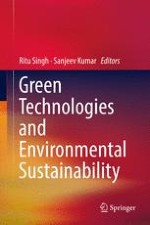Abstract
Biochar is a black solid material derived from the thermo-chemical decomposition of solid organic material in an oxygen-deficit atmosphere. In recent years, biochar has been contributed as a technique that can provide several environmental benefits upon application to soil, including long-term storage of carbon (C) in soil. Because of their dominantly aromatic nature, biochars are advised as a resistant form of C with long mean residence times (MRTs) in the range of hundreds to thousands of years.
Different pyrolysis techniques (e.g., torrefaction (a pyrolysis process at low temperature), slow pyrolysis, gasification, fast pyrolysis, intermediate pyrolysis, hydrothermal carbonization (htc), or flash carbonization) are used for biochar production. Recently, research on torrefied biomass as soil ameliorant has started only. Biochar characteristics are governed by production variables such as feedstock, highest treatment temperature, holding time at HTT, pyrolysis conditions, etc. Feedstock properties (both physical and chemical) and HTT are considered to be the main factors influencing biochar physico-chemical characteristics. Currently, biochar is prepared at small scale to large scale. In some countries, it is used for kitchen garden and prepared from the domestic waste. Both traditional earthen charcoal kilns and modern charcoal retorts can be used for biochar production. The traditional earthen charcoal kilns and charcoal retorts can be used for the industrial production of biochar. In former technology, pyrolysis, gasification, and combustion processes occur in earthen kiln layer. In the modern charcoal retorts, a metal barrier is used for the separation of pyrolysis and combustion processes. A specific biochar according to its inherent physico-chemical properties can be utilized for particular application. For an example, high surface area biochar may be utilized as a sorbent, whereas high recalcitrance biochar may be used in carbon fixation. Biochars rich in nutrient and mineral contents with high water holding capacity could be more suitable for soil fertility enhancement.
The application of biochar as an organic amendment is favourable in terms of carbon capture and fertility of soil. Biochar accommodates a suitable habitat for microorganisms due to its high porosity, adsorption and cation exchange capacity and affecting different microbial processes involved in nutrient cycling, green house gas emission and organic matter (OM) decomposition, etc. Other than its agriculture benefit, there is increasing interest in the implementation of biochar as an alternative technique for many environmental issues such as amelioration of contaminated sites. In recent years the effectiveness of the combination of biochar and other organic materials, for example compost, has been reported widely with regard to the remediation of polluted soils and the improvement of soil resistance against erosion and nutrient retention.
The liming and sorptive properties of biochar make it suitable for reclamation of low pH and metal polluted soils such as acidic mine spoil. Biochar amendment in acidic and polluted soil can serve dual purpose: (a) improve soil health, (b) extenuate the risk of heavy metal pollution in various environmental surroundings. The combination of phyto-remediation in combination with biochar addition could be an excellent technology to improve the soil quality index in the coal mine area. In this chapter, the potential of biochar amendment for promoting the establishment of a plant cover and phyto-stabilization strategies on contaminated soils has been discussed.
